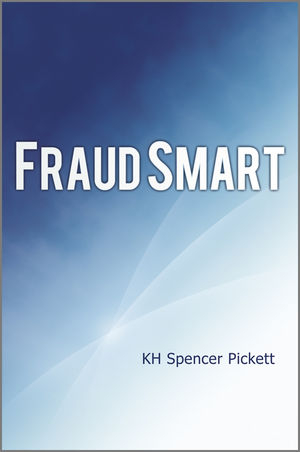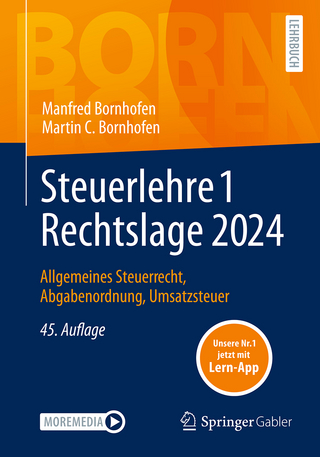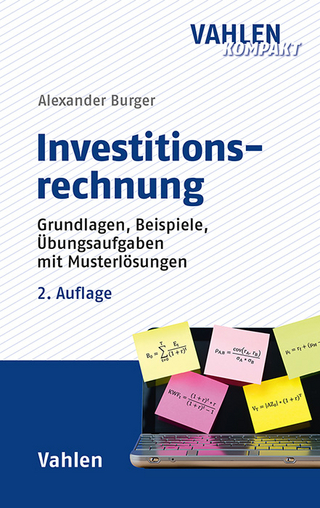
Fraud Smart
John Wiley & Sons Inc (Verlag)
978-0-470-68258-6 (ISBN)
- Titel ist leider vergriffen;
keine Neuauflage - Artikel merken
A professional guide to developing training for fraud risk and detection
This book provides a simple but effective method of developing a fraud risk awareness strategy that focuses on training employees using a six-stage approach to this task that involves understanding the threat, appreciating respective responsibilities, embracing a sound moral compass, recognizing red flags, mastering suitable internal controls, and managing the risk of fraud. Using this step-by-step approach, all senior executives, managers, employees, and associates can develop an important new skill set that will help them understand and deal with the risk of fraud in the workplace.
KH Spencer Pickett has an international reputation as a leading author on the subject of internal auditing and specializes in the development of E-learning resources. Please see www.businesscontrolstraining.co.uk for further details.
Preface xi Part I UNDERSTANDING THE THREAT 1
1 What Do We Mean by Fraud? 3
What can go wrong? 4
What do the experts say? 6
Our model explained 8
Income 8
Expenditure 9
Assets 10
Data 11
Our three key conclusions 12
2 A Wide Range of Threats 13
What can go wrong? 13
What do the experts say? 17
Our model explained 19
Simple 20
Complex 21
Internal 22
External 23
Our three key conclusions 24
3 T he Global Scene 25
What can go wrong 25
What do the experts say 28
Our model explained 29
Domestic 30
Foreign 30
Goods and services 31
Financial data 31
Personal identity 32
Image versus reality 33
Our three key conclusions 33
4 Building Your Fraud Smart Toolkit 35
Key learning objectives 35
Part I multichoice quiz 41
Part II APPRECIATING RESPECTIVE
ROLES 47
5 Fraud Smart Roles and Responsibilities 49
What can go wrong? 49
What do the experts say? 51
Our model explained 54
Corporate anti-fraud policy 55
Fraud prevention 55
Fraud detection 56
Fraud response 57
Our three key conclusions 58
6 Fraud Smart Skills Profile 59
What can go wrong? 59
What do the experts say? 61
Our model explained 63
Compliant 63
Honest 65
Competent 65
Astute 66
Our three key conclusions 67
7 Fraud Smart Training Needs 69
What can go wrong 69
What do the experts say 71
Our model explained 72
Anti-fraud policy 73
Training policy 74
Fraud control responsibilities 74
Current versus required profile 74
Personal development strategy 76
Our three key conclusions 76
8 Building Your Fraud Smart Toolkit 79
Key learning objectives 79
Part II multichoice quiz 84
Part III EMBRACING SOUND ETHICS 91
9 T he Moral Compass 93
What can go wrong? 93
What do the experts say? 95
Our model explained 96
Societal best interests 96
Corporate best interests 97
Personal best interests 98
Our three key conclusions 99
10 Implementing Values 101
What can go wrong? 101
What do the experts say? 103
Our model explained 104
Corporate code of ethics 105
Awareness 106
Disciplinary code 107
Assessment 108
Cultural integration 108
Our three key conclusions 109
11 Whistleblowing 111
What can go wrong? 111
What do the experts say? 113
Our model explained 115
Stance 116
Manager 117
Facilities 118
Experience 118
Awareness and trust 119
Our three key conclusions 120
12 Building Your Fraud Smart Toolkit 121
Key learning objectives 121
Part III multichoice quiz 126
Part IV RECOGNIZING RED FLAGS 133
13 T he Ingredients of Fraud 135
What can go wrong? 135
What do the experts say? 137
Our model explained 138
Benefits 138
Access 140
Motive 141
Concealment 142
Our three key conclusions 142
14 Why People Slip Up 145
What can go wrong? 145
What do the experts say? 148
Our model explained 149
Basic salary versus added pressure 150
Personal needs met? 150
Rationalization 151
Legality versus illegality 151
Our three key conclusions 152
15 Recognizing Red Flags 153
What can go wrong? 153
What do the experts say? 156
Our model explained 157
Lifestyle 158
Position 158
Behaviour 159
Our three key conclusions 161
16 Building Your Fraud Smart Toolkit 163
Key learning objectives 163
Part IV multichoice quiz 169
Part V MASTERING SUITABLE CONTROLS 177
17 T he Control Concept 179
What can go wrong? 179
What do the experts say? 180
Our model explained 181
Control environment 182
Risk assessment 183
Controls 184
Monitoring 184
Objectives, information and communication 185
Our three key conclusions 186
18 Basic Controls 189
What can go wrong? 189
What do the experts say? 191
Our model explained 192
Authorization 193
Exceptions 194
Procedures 194
Verification 195
Supervision 195
Segregation of duties 196
Our three key conclusions 196
19 Fraud Smart Risk Management 199
What can go wrong? 199
What do the experts say? 201
Our model explained 203
Objectives and business strategy 204
Anti-fraud policy 204
Threat assessment 206
Control review 207
Risk management strategy 208
Detection routines 208
Response and fix tools 209
Staff surveys 211
Enterprise risk management 212
Our three key conclusions 212
20 Building Your Fraud Smart Toolkit 215
Key learning objectives 215
Part V multichoice quiz 221
Appendix A C orporate Fraud Smart Policy 227
Appendix B Multichoice Quiz: Answers 245
Appendix C Fraud Smart: Your Score Sheet 247
index 249
| Erscheint lt. Verlag | 27.2.2012 |
|---|---|
| Verlagsort | New York |
| Sprache | englisch |
| Maße | 160 x 236 mm |
| Gewicht | 544 g |
| Themenwelt | Wirtschaft ► Betriebswirtschaft / Management ► Finanzierung |
| Wirtschaft ► Betriebswirtschaft / Management ► Unternehmensführung / Management | |
| ISBN-10 | 0-470-68258-2 / 0470682582 |
| ISBN-13 | 978-0-470-68258-6 / 9780470682586 |
| Zustand | Neuware |
| Haben Sie eine Frage zum Produkt? |
aus dem Bereich


